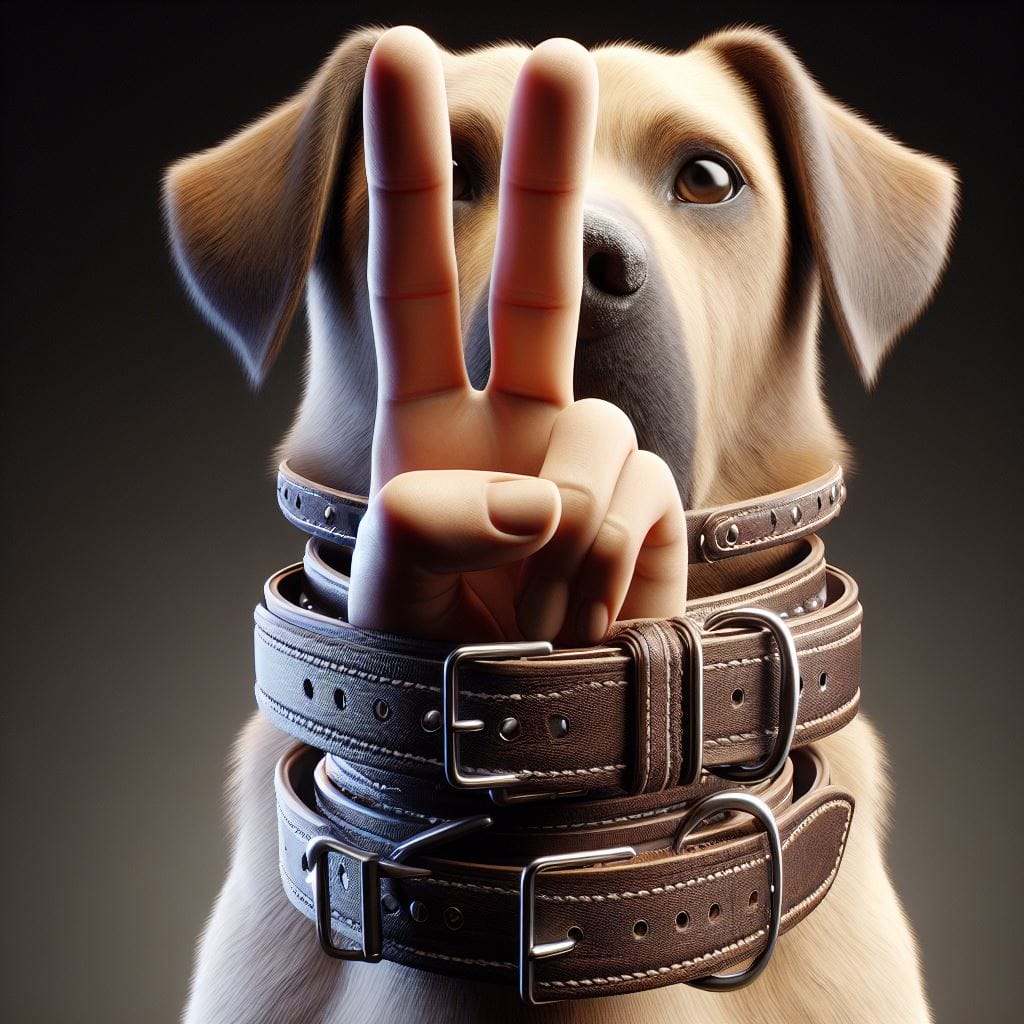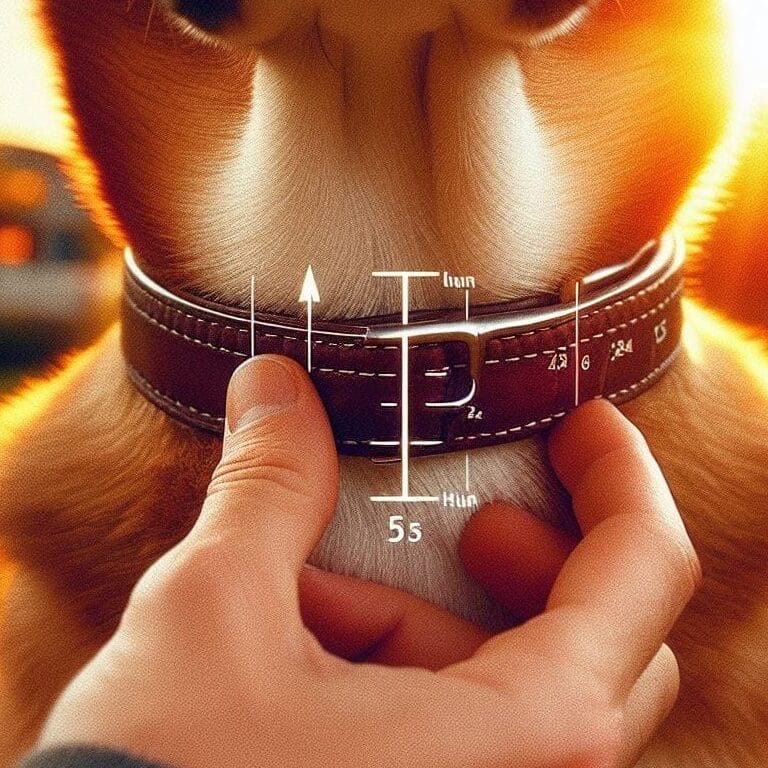In a nation where 70% of households have pets, with 69 million families owning at least one dog, the love for our furry friends is evident. Our furry friends deserve the best care, and that includes finding the right fit for their collars. But how tight should a dog collar be exactly? Let’s break it down in simple terms to ensure your dog’s comfort and safety.
Introduction
Being a good dog owner means making sure your dog’s collar fits just right. This article is here to help you understand the basics of getting that perfect fit for your canine companion.
Understanding How Dogs are Built
Before we get into collars, let’s think about how dogs are built. Every dog is different, and knowing a bit about their necks helps in choosing the right collar.For example , some dogs are large in size and some are very small.That’s why we should choose their collars according to their sizes.
How to Measure for a Dog Collar:
- Use a soft measuring tape.
- Measure to the desired tightness.
- Apply the two-finger rule.
- Special care for martingale collar measurements.
Two-Finger Rule:
- Place two fingers between the dog’s neck and the collar.
- If two fingers fit comfortably, the collar is likely a good fit.

Picking the Right Size Collar
No need for complicated methods here. We’ll show you easy ways to measure your dog’s neck, and we’ll talk about collars that you can adjust to fit them perfectly.
Sizes For a Dog Collar
Extra Small (XS):
Fits up to 10 inch necks for small dog breeds such as Miniature Dachshunds and Chihuahuas.
Tiny (Small):
Neck sizes range from 10 to 14 inches. Ideal for little dogs such as Pugs and Shih Tzus.
Medium (M):
Fits necks up to 18 inches in length. Ideal for bulldogs and other medium-sized dogs, such as Beagles.
Big (Large):
Collar size: 18 to 22 inches.Excellent for bigger breeds, such Labrador Retrievers.
Extra Large (XL):
Fits neck sizes up to 22 inches.Made to fit large dogs, such as Great Danes.
Signs of a Collar that’s Too Tight
Dogs communicate in their own way. We’ll share how your dog might act and physical signs that tell you the collar is too tight.
Dangers of Collars that are Too Tight
Too-tight collars can lead to breathing problems and skin issues. Too tight collar can cause pain ,chafing.
Dangers of Collar that’s Too Loose
Too loose may lead to slipping out and getting lost. On the flip side, we’ll cover how to spot if the collar is too loose, leading to concerns about your dog escaping or problems with identification.
Finding the Right Fit
It’s all about balance. Learn how to make sure the collar is snug but not too tight, leaving room for your furry friend to grow.

Different Types of Collars and What They Do
Not all collars are the same. We’ll break down the regular buckle ones and introduce you to special collars like martingales and quick-release.
Types of Collars:
- Fabric Collars:
- Adjustable and comfortable.
- Available in various designs.
- Chain Collars:
- Durable and good for active dogs.
- Remove when not in use to prevent tangling.
- Leather Collars:
- Stylish, strong, and durable.
- Suitable for dogs with sensitivities.
- Lighted Collars:
- Enhance visibility during night walks.
- Ensure the collar is snug for proper positioning of LED lights.
- Martingale Collars:
- Designed to prevent slipping out.
- Tightens when the dog pulls.
- Electronic Collars:
- Used in training, especially for boundaries.
Should be used responsibly and under professional guidance.
Teaching Dog Owners
Responsibility is a team effort. We’ll explain why checking the collar regularly is crucial and how to train your dog to be comfortable wearing it.
Make sure your furry friend stays happy and safe by checking their collar regularly. Look for any wear and tear, adjust the size if needed, and make sure tags and buckles are secure. This helps avoid any discomfort or skin irritations. When introducing a collar, start early, use treats and praise, and gradually increase wearing time. Keep things fun by playing with your pup during this process.
Special Things to Think About with Puppies
Puppies grow fast, and their collars need adjusting. We’ll guide you on doing this and slowly getting your puppy used to wearing a collar.
Making Collars Fit Different Breeds
Different dog breeds have different neck sizes. Get breed-specific tips to make sure your dog’s collar fits just right.
What Kind of Material for Dog Collars is Best
Comfort matters. We’ll tell you about materials that are comfy for your dog and ones to avoid.
Choosing the best material for your dog’s collar depends on their size and lifestyle.
Nylon is light and durable for everyday use.
Leather looks classic and gets comfier over time.
Biothane is easy to clean and good for outdoor adventures.
Reflective or LED collars help your dog stay visible in low light.
Pick a collar material based on what keeps your dog comfy and safe.
Want To Know How To Make a Dog collar ? Check here
Keeping Collars Clean and in Good Shape
Regular cleaning keeps your dog’s collar in top condition. Learn easy routines and how to check for wear and tear.
Wrapping Up
In the big picture of being a great dog owner, getting the collar fit right is crucial. Understand your dog, pick the right collar, and watch out for signs of discomfort. Let’s make being a dog owner a joyful and responsible journey.
About US
“P4PetCollar
“Discover style and safety for your pets at P4PetCollar! Our trendy and durable collars are designed for comfort and made with love. Elevate your pet’s look with us!”



